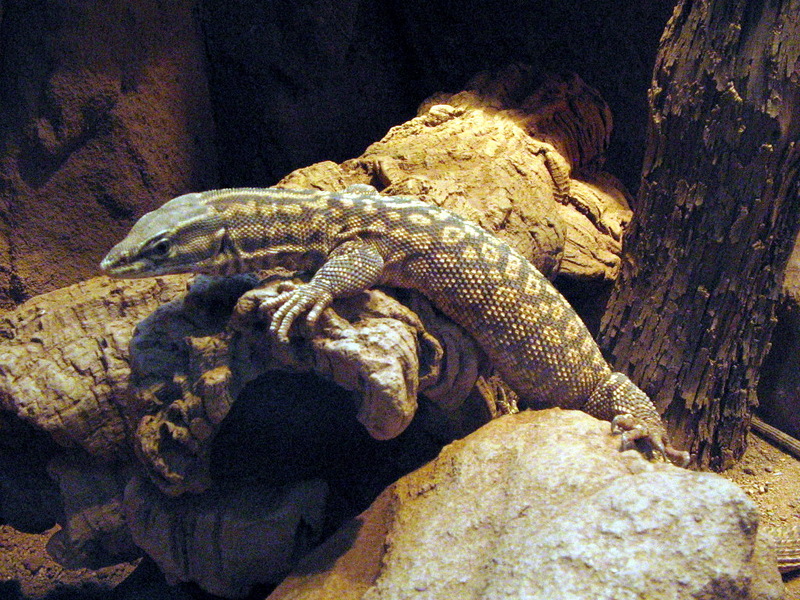Spiny-tailed Monitor (Varanus acanthurus) - Wiki Spiny-tailed monitor
From Wikipedia, the free encyclopedia
[Photo] Spiny-tailed Monitor (varanus acanthurus). Beschreibung: Stachelschwanzwaran (Varanus acanthurus). Fotograf: Factumquintus (http://de.wikipedia.org/wiki/Benutzer:factumquintusy). Datum: 30 April 2005.
| Permission is granted to copy, distribute and/or modify this document under the terms of the GNU Free Documentation License, Version 1.2 or any later version published by the Free Software Foundation; with no Invariant Sections, no Front-Cover Texts, and no Back-Cover Texts. A copy of the license is included in the section entitled "GNU Free Documentation License". |
The
Spiny-tailed Monitor or
Ridge-tailed Monitor (
varanus acanthurus) is a small species of
monitor lizard. They are native to Northwestern Australia and live in a variety of habitats from arid to tropical regions.
Spiny-tailed Monitors are usually a reddish brown with yellow markings but color and pattern can vary with geographic origin. A distinctive feature is their thick spined tail - hence their common name. This tail is used for both attacking prey and for protection from predators. When attacking prey the tail is used like a whip, stunning the prey item which is then consumed without expending further effort. When used in defense, the Ridge-tail will scramble into loose rocks or boulders and use its tail to wedge itself in tight. The spikes give the tail good grip on the rocks, making extraction by other predators nearly impossible. In the species' home territory, the tail is often found discarded near Ridge-tail carcasses, indicating that predators of this species consider the tail inedible.
Their diet consists mainly of insects and small
lizards.
There are several subspecies including:
Varanus acanthurus brachyurus, Common
Ridge-tailed Monitor, or Yellow Ackie
Varanus acanthurus insulanicus, Island
Ridge-tailed Monitor
http://en.wikipedia.org/wiki/Spiny-tailed_monitor| The text in this page is based on the copyrighted Wikipedia article shown in above URL. It is used under the GNU Free Documentation License. You may redistribute it, verbatim or modified, providing that you comply with the terms of the GFDL. |
